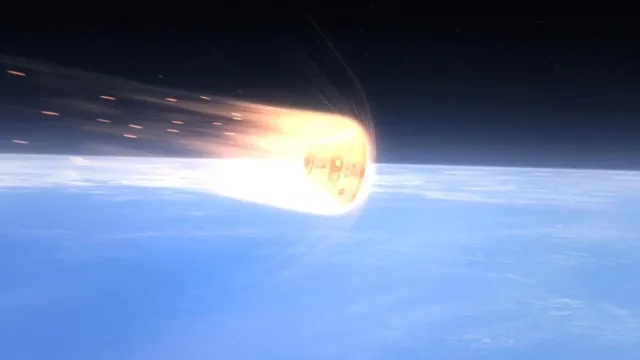
Soviet spacecraft poised to crash-land on Earth after decades in orbit
2025-05-01 17:58- A Soviet-era spacecraft, Kosmos 482, launched in 1972, is expected to reenter Earth's atmosphere next week after decades in orbit.
- Dutch satellite analyst Marco Langbroek predicts it will come crashing down around 150 mph, likely surviving the reentry.
- While the risk of it striking land is low, its potential reentry raises interest regarding space debris management.
Express your sentiment!
Insights
A Soviet spacecraft launched in 1972, known as Kosmos 482, has been marooned in Earth orbit for over five decades. Initially intended to land on Venus, the vessel suffered a failure during its launch, leaving it stuck in orbit since its inception. Satellite analysts, including Dutch scientist Marco Langbroek, have predicted that Kosmos 482 will reenter the Earth's atmosphere between May 7 and May 13, 2025. Kosmos 482 was designed to withstand the extreme conditions of Venus, and experts believe it may survive reentry if its heat shield remains intact. The spacecraft has been gradually descending in its elliptical orbit, and now analysts estimate it may reenter at a speed of 150 mph (242 kph). Despite concerns about risking human life or property, the likelihood of Kosmos 482 hitting something specific is low. There is still uncertainty regarding the exact location of impact. Experts place its potential reentry anywhere within latitudes of 51.7 degrees north and south, covering a vast area that includes parts of Europe, Asia, Africa, the Americas, and Australia. However, given that oceans cover much of the Earth, the chances are high that it will crash into the sea rather than land on solid ground. The upcoming reentry is considered an event of high interest due to its rarity, marking the return of space debris from the Cold War era. There is a growing awareness and discussion regarding space debris and its management, as more old spacecraft, satellites, and components in orbit decay and pose potential risks for future missions and for life below.
Contexts
Space debris, often referred to as 'space junk,' consists of defunct satellites, spent rocket stages, and fragments resulting from collisions or disintegration. As human activity in space has increased, the amount of space debris has grown significantly, raising concerns about the safety of operational satellites and manned missions. Effective management strategies are essential to mitigate the risks associated with space debris, which can endanger spacecraft and contribute to the proliferation of debris itself. This report discusses various strategies to manage space debris, emphasizing prevention, removal, and international collaboration. To prevent the generation of additional debris, strategies must focus on responsible satellite design and end-of-life disposal protocols. Satellite operators are encouraged to adhere to guidelines that promote orbital debris mitigation, such as deorbiting satellites at the end of their missions or moving them to a graveyard orbit. Additionally, the implementation of strict regulations related to the launch of new satellites, including the use of reusable launch vehicles and limiting the lifetime of missions in low Earth orbit (LEO), can help reduce the accumulation of space debris over time. Public awareness and education regarding the importance of debris mitigation must also be heightened in the aerospace industry. Removal of existing space debris presents a more complex challenge, as it requires advanced technology and international cooperation. A variety of removal techniques have been proposed, including robotic arms, nets, harpoons, and lasers to deorbit or capture larger pieces of debris. Mission demonstrations are essential to evaluate these methods, and several entities, both governmental and commercial, are currently pursuing active debris removal (ADR) projects. These missions often depend on funding and public-private partnerships, which can foster innovation while addressing the economic barriers associated with space debris removal efforts. Lastly, international collaboration is crucial for the effective management of space debris. Since the space environment is shared globally, nations must work together through treaties, guidelines, and best practices to establish a collective approach to space sustainability. Organizations like the United Nations Committee on the Peaceful Uses of Outer Space (COPUOS) play a pivotal role in facilitating dialogue and developing international frameworks for debris mitigation. Enhanced communication and data sharing among space-faring nations can contribute to better tracking of space debris and help organizations coordinate efforts to address emerging risks. In conclusion, the effective management of space debris requires a multifaceted approach that integrates prevention, removal, and international cooperation to ensure a sustainable space environment for current and future generations.